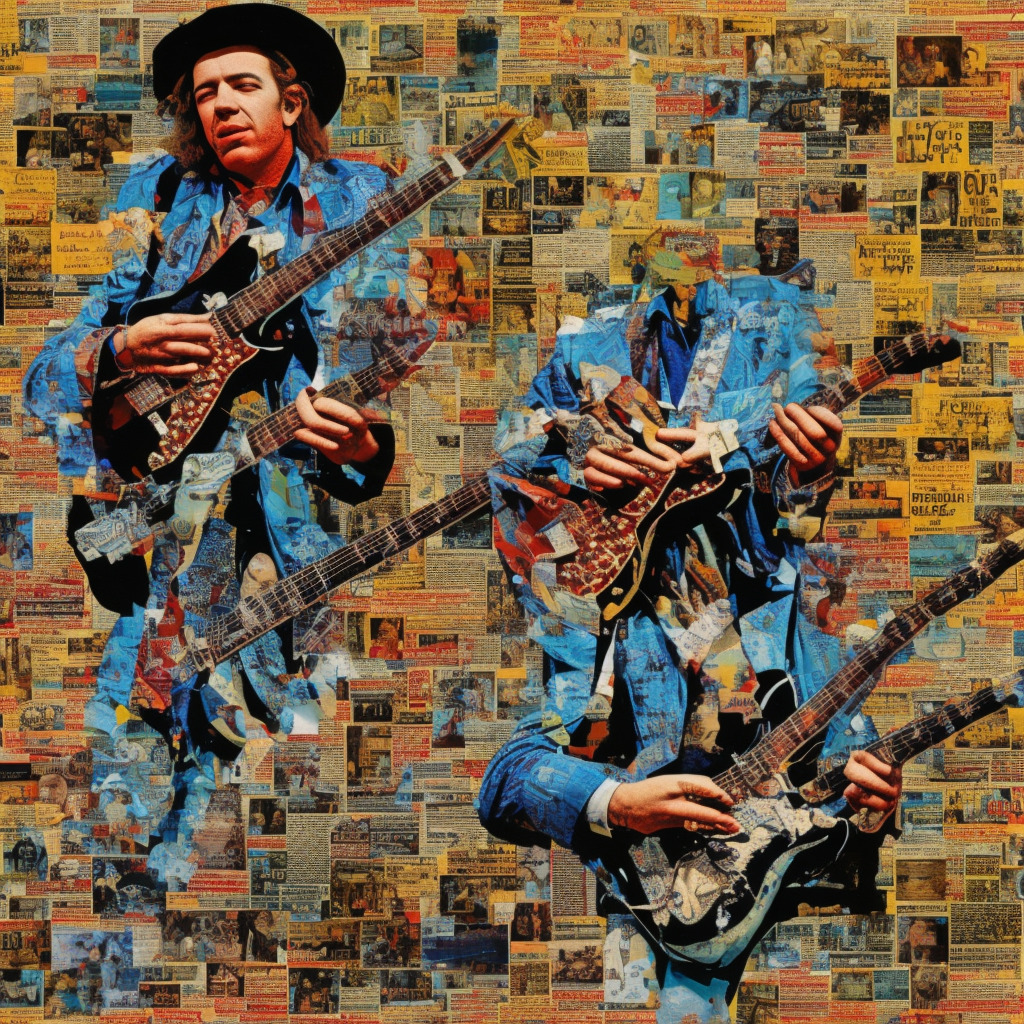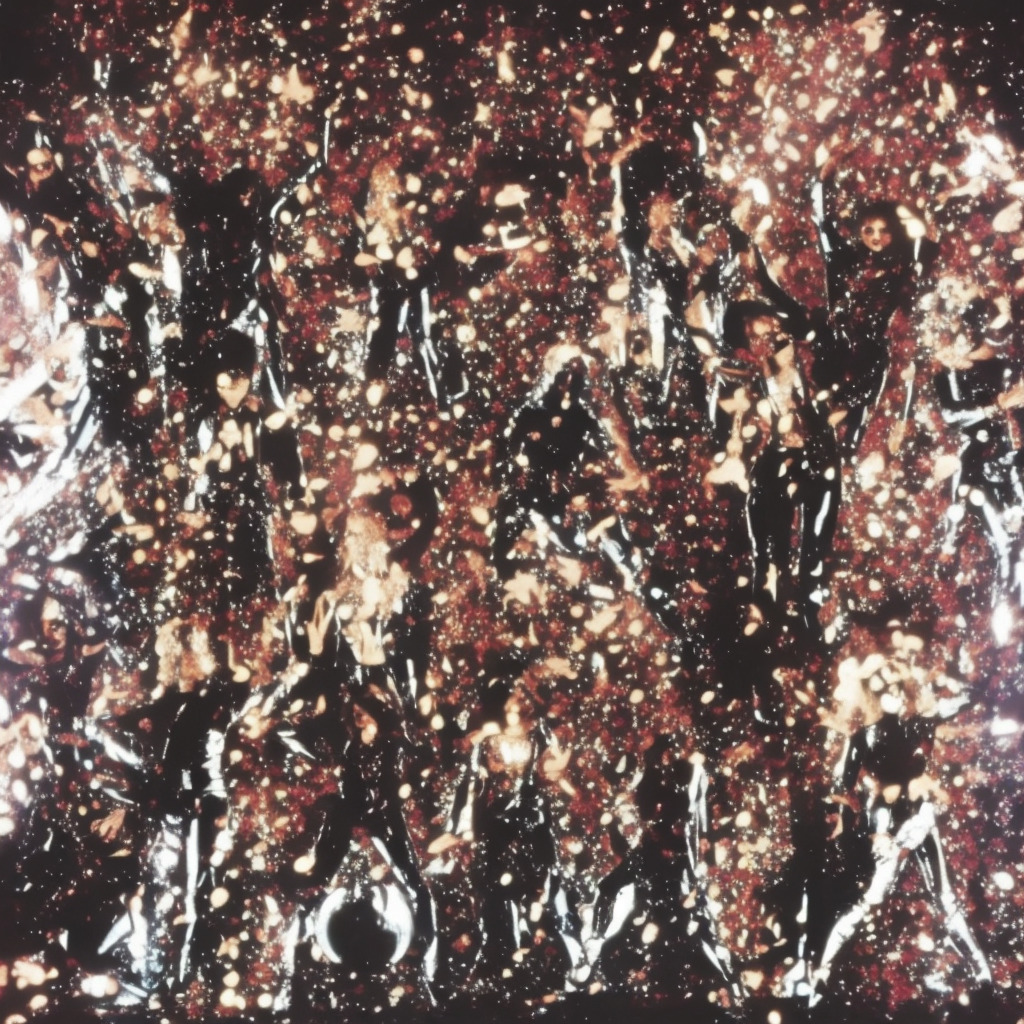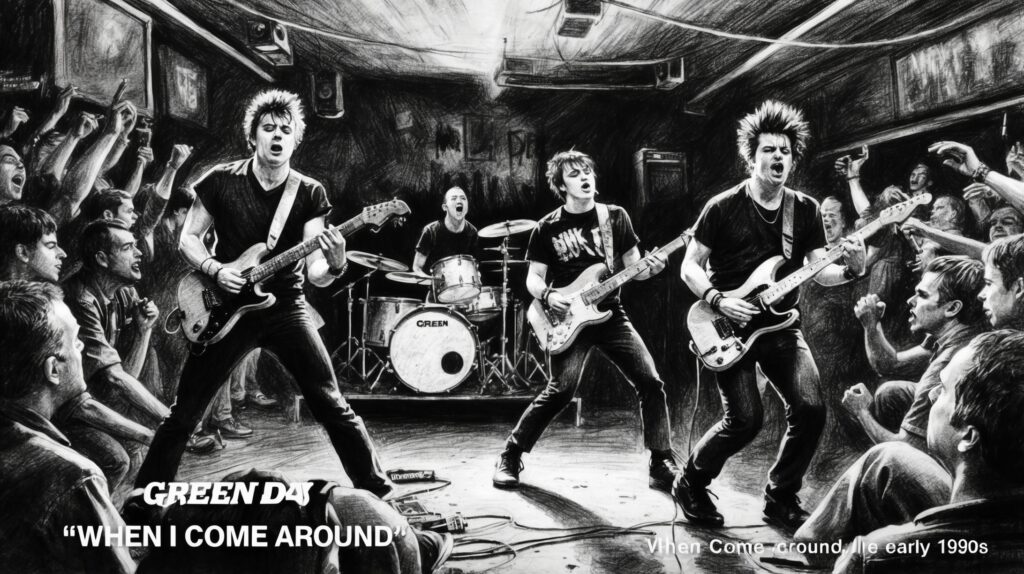🎸Did you know that Stevie Ray Vaughan’s iconic tune “Pride and Joy” was a love letter to his girlfriend? This powerful blues track still steals our hearts 38 years later! 💙🔥 #SRV #PrideAndJoy #BluesGuitarLegend #FunFact Read about it: tinyurl.com/4ujnuwve
Unveiling the Gem of Texas Blues: Dive into Stevie Ray Vaughan’s “Pride and Joy”
Discover Stevie Ray Vaughan’s captivating fusion of soulful vocals and electrifying guitar skills in the timeless blues-rock masterpiece, “Pride and Joy.”
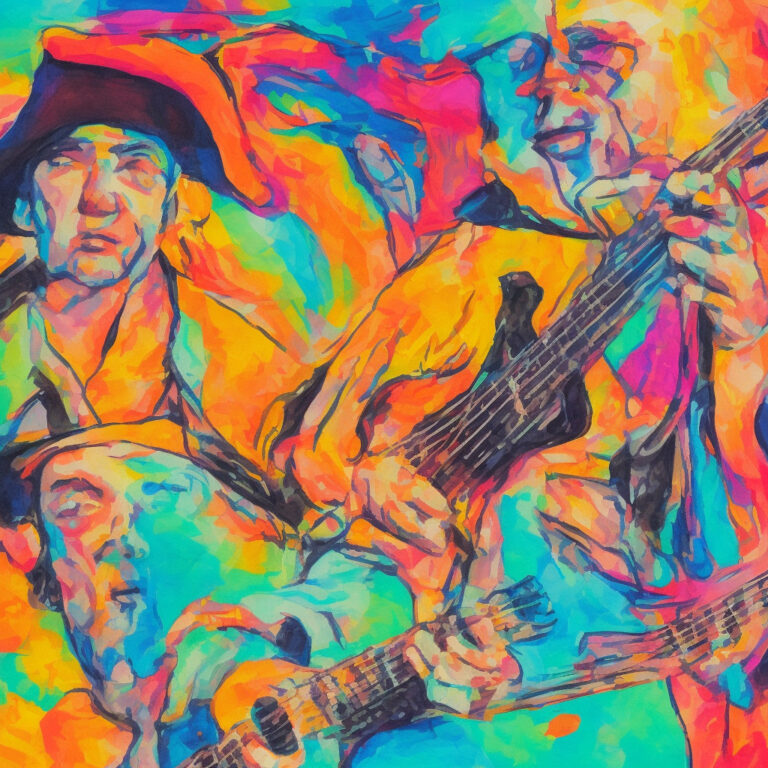
When talking about the legends of blues-rock music, one name that stands out among the greats is Stevie Ray Vaughan. Known for his soulful voice and extraordinary guitar skills, Vaughan helped pave the way for countless musicians who followed in his footsteps. In this post, we’ll explore the magic behind one of his most iconic songs, “Pride and Joy.”
Born in 1954 in Dallas, Texas, Stevie Ray Vaughan was a true prodigy. Inspired by his older brother Jimmie Vaughan, himself a well-known guitarist, Stevie picked up the guitar at a young age and quickly began making a name for himself. Vaughan’s band, Double Trouble, was formed in 1978 and became a popular act on the local Austin music scene. It wasn’t long before the band caught the attention of record labels, and their debut album, “Texas Flood,” was released in 1983.
“Pride and Joy” was one of the standout tracks from “Texas Flood,” showcasing Vaughan’s incredible prowess on the guitar. The song, written about his then-girlfriend, features an infectious groove and a catchy melody that’s hard to resist. Vaughan’s guitar work, both rhythm and lead, demonstrate his ability to make even the most complex patterns and solos seem effortless, while his raw, emotive vocals add a layer of authenticity that’s hard to find in many artists.
One aspect that sets “Pride and Joy” apart from other blues songs is its unique tuning, known as “drop D” tuning. This means the low E string on the guitar is tuned down a whole step to D, allowing for heavier, richer chords and a more powerful sound. This technique, while not unheard of in blues music, is relatively rare and allowed Vaughan to craft his signature sound.
Throughout his career, Stevie Ray Vaughan was no stranger to accolades. He won several Grammy Awards, including one for Best Contemporary Blues Album for his 1990 release “In Step.” Additionally, Vaughan was posthumously inducted into the Rock and Roll Hall of Fame in 2015, testament to his lasting impact and influence on the music world.
While Vaughan’s untimely death in 1990 at the age of 35 cut his career tragically short, his legacy lives on through his incredible body of work. “Pride and Joy” remains a shining example of Vaughan’s unique mastery of blues-rock, and a song that will never fade away. So, whether you’ve been a die-hard fan since day one or you’re just discovering the genius of Stevie Ray Vaughan, this track is a testament to his enduring talent and the lasting impact he’s had on the music world.
Charting the Course of a Timeless Classic
“Pride and Joy” – Stevie Ray Vaughan’s timeless masterpiece defies chart positions, carving its own niche amidst icons and leaving a lasting legacy in blues and rock for generations to come.

“Pride and Joy,” released as a single on April 7, 1983, marked the beginning of Stevie Ray Vaughan’s journey into the mainstream music scene. The track initially entered the Billboard Mainstream Rock Tracks chart with a modest position, but its infectious melody and unparalleled guitar work quickly gained traction, propelling the song to new heights.
In the weeks following its release, “Pride and Joy” climbed steadily through the charts, eventually peaking at number 20 on the Billboard Mainstream Rock Tracks chart. While it didn’t secure a spot in the top ten, the song’s impressive chart run was a testament to its enduring appeal among both casual listeners and die-hard blues enthusiasts.
What makes the song’s chart performance even more remarkable is the fact that “Pride and Joy” faced stiff competition from other iconic tracks released during the same period. In 1983, the music world was dominated by the likes of Michael Jackson, David Bowie, and The Police, yet Stevie Ray Vaughan’s unique blend of blues and rock managed to carve out its own niche in the crowded landscape.
Throughout the years, “Pride and Joy” has continued to resonate with listeners, earning high praise and critical acclaim for its timeless quality. In fact, the song’s enduring popularity has led to it being covered by numerous artists across different genres, further solidifying its status as a true classic in the annals of music history.
In conclusion, while “Pride and Joy” may not have dominated the charts upon its initial release, its steady climb and subsequent legacy serve as a testament to the power of great music. The song’s chart success, or lack thereof, can’t diminish its impact on the world of blues and rock, and its influence will undoubtedly continue to be felt for generations to come.
Unlocking the Soul in “Pride and Joy”
Now that we’ve discussed the background of “Pride and Joy” and the impact of Stevie Ray Vaughan’s guitar skills on the music scene, let’s dive into the lyrics that make this song so memorable. Stevie Ray Vaughan’s heartfelt words express his love and affection for his significant other with a bluesy, Southern charm.
Well, you’ve heard about love givin’ sight to the blind
My baby’s lovin’ cause the sun to shine
She my sweet little thang, she’s my pride and joy
She my sweet little baby, I’m her little lover boy
Yeah I love my baby, heart and soul
Love like ours will never grow old
She my sweet little thang, she’s my pride and joy
She my sweet little baby, I’m her little lover boy
Yeah I love my lady, she’s long and lean
You mess with her, you’ll see a man get mean
She my sweet little thang, she’s my pride and joy
She my sweet little baby, I’m her little lover boy
Well I love my baby like the finest wine
Stick with her until the end of time
She my sweet little thang, she’s my pride and joy
She my sweet little baby, I’m her little lover boy
Yeah I love my baby, my heart and soul
Love like ours will never grow old
She my sweet little thang, she’s my pride and joy
She my sweet little baby, I’m her little lover boy
Yeah I love my lady, she’s long and lean
You mess with her, you’ll see a man get mean
The lyrics of “Pride and Joy” may seem simple at first glance, but they possess a depth and emotion that resonates with the listener. Stevie Ray Vaughan’s words convey his love for his partner with a sense of pride and devotion that is both touching and relatable. In the era when the song was released, in the early 1980s, the world was experiencing significant social and cultural changes. Stevie Ray Vaughan’s sincere and heartfelt expression of love in these lyrics can be seen as a statement of commitment and loyalty in an ever-changing world.
This song is more than just a catchy melody – it’s a testament to the power of love and the importance of standing by the ones we care for most. The lyrics of “Pride and Joy” have a timeless quality that speaks to the human experience, and their emotional depth continues to touch listeners today, no matter the era or circumstance.
In our next section, we’ll delve into the impact of “Pride and Joy” on the music industry and its legacy in the world of blues and rock music. Stay tuned!
A Visual Feast: The Music Video for “Pride and Joy”
Experience a timeless visual feast as Stevie Ray Vaughan’s raw talent takes center stage in the nostalgic and captivating music video for “Pride and Joy.”
Diving into the music video for Stevie Ray Vaughan’s “Pride and Joy” is like stepping into a time machine back to the 1980s. Released in 1983, the video remains a testament to Vaughan’s incredible talent and timeless appeal. Directed by Richard M. Kerns, the video captures the essence of the song, showcasing Vaughan’s guitar prowess and soulful vocals.
The music video for “Pride and Joy” features a simple yet effective concept, focusing primarily on Stevie Ray Vaughan and his band, Double Trouble, performing the song in a small, dimly lit club. The video begins with a close-up of Vaughan’s hands strumming the iconic opening chords, immediately drawing viewers into the world of the song. As the camera pans out, we see Vaughan and his band, along with a lively audience, completely immersed in the music.
Kerns’ artistic approach enhances the video’s authenticity and rawness. He chose to shoot the video in black and white, a decision that gives it a nostalgic and timeless feel. This choice also accentuates the intensity of Vaughan’s performance, as the monochrome palette highlights the sweat on the musician’s face, symbolizing the passion and dedication he pours into his craft.
The production details of the video reveal a relatively low budget, which was a common feature of music videos made during that era. Despite the financial constraints, the video’s creative team managed to produce a captivating and memorable visual experience. The simple set design, consisting of a stage, instruments, and a few scattered tables, allows the viewer to focus on the music and the performers. The editing is seamless, featuring smooth transitions between close-ups of Vaughan and wider shots of the band, keeping the viewer engaged throughout the entire video.
While the music video for “Pride and Joy” may not have the flashy effects or elaborate narratives of more recent productions, its charm lies in its simplicity and the raw talent of Stevie Ray Vaughan. Over the years, this video has inspired countless fan tributes on YouTube, where guitar enthusiasts worldwide attempt to recreate Vaughan’s mastery of the instrument. The video has also amassed millions of views on the official Stevie Ray Vaughan VEVO channel, demonstrating the enduring impact of “Pride and Joy” on music lovers across generations.
The Genius Behind the Strings: Stevie Ray Vaughan
Pride and Joy’s composer, Stevie Ray Vaughan, is undeniably one of the most revered guitarists in the history of blues and rock music. Born and raised in Dallas, Texas, Vaughan’s innate talent was evident from the start as he quickly gained recognition for his passionate playing style and soulful performances. Throughout his tragically short career, Vaughan composed several other notable songs that have left a lasting impact on the music industry. One such example is the powerful instrumental track, “Little Wing,” which showcases his astounding guitar techniques, while “Texas Flood” demonstrates his ability to infuse traditional blues with a modern, electrifying edge. Another significant composition, “Cold Shot,” offers listeners a taste of Vaughan’s incredible versatility as a musician, blending elements of rock, blues, and funk. Despite his untimely passing, Stevie Ray Vaughan’s legendary artistry continues to inspire and captivate the hearts of music enthusiasts around the globe.
Award-Winning Blues and Impactful Appearances
“Pride and Joy” stands tall as a timeless blues classic, boasting chart success, media presence, and captivating covers that continue to strike a chord with fans and musicians alike.
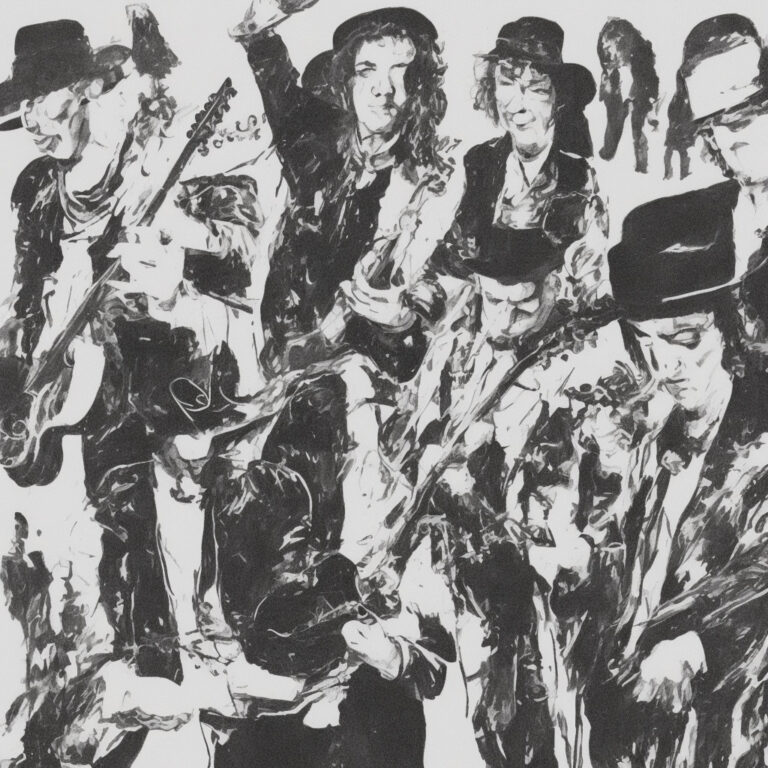
Over the years, “Pride and Joy” has garnered significant recognition and accolades, cementing its place as a blues classic. It peaked at No. 20 on the Billboard Mainstream Rock chart in 1983, while it also reached No. 4 on the Billboard Hot Dance Club Play in 1999, thanks to the remix version by Audé. Moreover, the song’s parent album, “Texas Flood,” earned Stevie Ray Vaughan and Double Trouble a Grammy nomination for Best Rock Instrumental Performance in 1984.
“Pride and Joy” has transcended the boundaries of music and has been featured in several movies, television shows, and video games. Some of the notable appearances include the 1993 film “The Thing Called Love,” starring River Phoenix and Samantha Mathis, as well as the popular crime drama series “Cold Case” in its 2007 episode, “The Good-Bye Room.” The song was also featured in the 2010 video game “Guitar Hero: Warriors of Rock,” where players can channel their inner Stevie Ray Vaughan and play along with the iconic guitar riff.
Like any beloved song, numerous artists have paid tribute to Stevie Ray Vaughan by covering “Pride and Joy.” One of the most notable cover versions came from country artist Travis Tritt, who included it on his 2002 album “Strong Enough.” Tritt’s rendition stayed true to the original while adding his distinct southern rock-inspired sound. Another remarkable cover came from blues rock band Kenny Wayne Shepherd Band, known for their energetic live performances, capturing the essence of the original version. Additionally, guitar virtuoso Joe Bonamassa has performed the song live on multiple occasions, showcasing his immense talent and admiration for Stevie Ray Vaughan’s guitar playing.
In summary, “Pride and Joy” continues to be celebrated and enjoyed by fans and fellow musicians alike. Its success in the charts, presence in various forms of media, and enduring appeal through cover versions further solidify the song’s status as a timeless blues classic.
Dissecting the Musical Magic
Diving into the musical structure of “Pride and Joy,” it’s clear that Stevie Ray Vaughan’s incredible talent is at the core of the song’s success. The track is written in the key of E major, a popular choice for blues music, which contributes to its energetic and upbeat vibe. It features a classic I-IV-V chord progression (E-A-B), which is a staple in the blues genre. This simple yet effective foundation allows for the song’s more intricate aspects to shine through.
A signature element of “Pride and Joy” is its shuffle rhythm, which sets the tempo at a lively pace. The rhythm is driven by a Texas shuffle groove, characterized by a swung eighth note feel. This groove gives the song its recognizable swagger and adds to the overall coolness factor. The tempo of the track stays consistent throughout, clocking in at approximately 126 beats per minute (BPM), which further underscores the song’s lively and engaging nature.
Stevie Ray Vaughan’s guitar playing takes center stage in “Pride and Joy,” showcasing his virtuosic ability and iconic tone. The song features a mix of single-note riffs, double stops, and bends, highlighting Vaughan’s mastery of various techniques. Additionally, the track includes several impressive solos that demonstrate his incredible skill as a lead guitarist. The solos are primarily based on the E pentatonic minor scale, which is a common choice for blues soloing, and are sprinkled with chromatic passing tones that add tension and excitement.
The song’s arrangement also plays a significant role in its overall impact. The structure follows the classic verse-chorus-verse-chorus-solo-chorus format, which allows for the memorable hook to be repeated multiple times, making it easily recognizable and engaging for listeners. The instrumentation is kept fairly minimal, with Vaughan’s guitar accompanied by bass, drums, and occasional organ, leaving ample room for his guitar to shine. The organ, while subtle, adds a layer of warmth and depth to the mix, enhancing the song’s rich sonic landscape.
In conclusion, the musical structure of “Pride and Joy” is a perfect example of how simplicity can give way to intricacy and brilliance. Stevie Ray Vaughan’s expertly crafted guitar work, combined with a classic blues progression and rhythmic foundation, results in a timeless track that continues to captivate listeners to this day.

